Many persons around the world have adopted the dress of Vaisnavas due to the influence of His Divine Grace A.C. Bhaktivedanta Swami Prabhupada and his
In my opinion, Clean shaved Brahmacharies & Grhasthas in saffron robes look like angels from Baikunta. (Letter to: Damodara --13 October, 1967)
Although dress is external, it tells quite a bit about the person inside. Srila Prabhupada himself refused to give up wearing his standard sannyasi robes despite requests to the opposite from his compatriots:
Before me, so many swamijis went there [to Western countries such as
In the spiritual world Lord Krishna, Lord Visnu and Their devotees wear dhotés, tilaka, etc., and naturally when They come to this planet for pastimes They dress the same. It is not surprising then, that Srila Prabhupada encouraged his followers to wear Vaikuntha dress.
But Is Vaikuntha Dress Practical Today?
Is it practical for modern-day devotees to wear? For the most part, yes. Exceptions would be where such dress could provoke violence from fanatics or while doing heavy or dirty work. Otherwise wearing robes, as Srila Prabhupada often referred to dhotés and saris, is the most practical dress for a devotee.
As a soldier feels energy when wearing his uniform and as a uniformed policeman becomes easily recognizable by citizens, so devotees feel enlivened dressing in the style of devotees which also reminds others to think of
The saffron robes and the shaven head are not essential, although they create a good mental situation, just as when a military man is dressed properly he gets energy—he feels like a military man. (Science of Self Realizaiton, 5)
MEN’S VAISNAVA DRESS
Dhoté
Sikha (with shaved-head)
Facial Hair (without)
Earrings (without)
WOMEN’S VAISNAVI DRESS
Sari
Braided Hair (with part)
MEN’S AND WOMEN’S VAISNAVA DRESS
Tilaka
Kaëöhé-mälä, “neck beads”
Leather-less
Çyämasundara: This is Kalki däsa and Ambikä devé däsé [husband and wife].
Prabhupäda: Now, with this dress you look so beautiful. This Vedic dress is also nice, very beautiful. It increases the beauty hundred times by this dress. (Initiations -- Sydney, April 2, 1972)
MEN’S #1: THE DHOTÉ
A dhoté is a piece of cloth (generally made of cotton or silk), four to five yards long and 48 to 60 inches wide, worn as a lower garment by cultured males in Vedic society.
Dhoté, in India, they use dhoté, about five yards, one dhoté. (Class given by Srila Prabhupada; Caitanya-caritämåta, Madhya-lélä 20.66-96 -- New York, November 21, 1966)
After the dhoté is secured about the waist, the remaining length of cloth on either side is folded accordian-style and tucked into the waist band in the middle front and rear center. The piece of cloth brought between the legs and tucked in the rear is called a kacha. Srila Prabhupada introduced such dhotés to his male brahmacari and grhastha disciples in the 1960’s. Srila Prabhupada himself wore such dhotés while in the grhastha asrama.
The photo shows Abhay in his late twenties. He is thin and dark, with a full mustache. His forehead is broad, his eyes dark and clear. He wears a white kurtä and dhoté and plain dark slippers. (Srila Prabhupada Lilamrita)
If there is no kacha in the back, or in other words no folded cloth brought from the front and tucked into the back center waistband, the garment is known as a lunghi. Sometimes such a lunghi is referred to as “mukta-kacha” without a kacha. This type of lunghi is designated to be worn by sannyasis as exemplified by Srila Bhaktisidhanta Sarasvati Goswami Maharaja and Srila Prabhupada, etc.
Throughout the entire era of Srila Prabhupada’s presence in ISKCON in 1966 until his departure in 1977, ISKCON brahmacaris and householders wore the traditional dhotés with kacha tucked in the back. Since his departure, however some ISKCON men have begun wearing lunghis in the place of dhotés although they are not in the sannyasa asrama. This was not introduced by Srila Prabhupada and it is our opinion that wearing lunghis should not be worn within ISKCON by householders and brahmacaris.
By putting aside the standard dhotés we have been given by Srila Prabhupada, we wander out into unknown murky waters. Each item Srila Prabhupada introduced was a perfect instrument for cultivating
“Dhuti” in Bengali
The term dhoté (dhuti in Bengali) is directly used in the Sri Caitanya Caritämåta at the time when Sanätana Gosvämé came to see Lord Caitanya at Banares.
tabe miçra purätana eka dhuti dila
teìho dui bahirväsa-kaupéna karila
When Tapana Miçra gave Sanätana Gosvämé a used dhoté, Sanätana immediately tore it into pieces to make two sets of outer cloth and underwear. (Caitanya-caritämåta; Madhya 20.78)
Lord Caitanya Mahaprabhu stayed at the home of a first class householder devotee, Tapana Misra, whom Caitanya Caritamrita specifically designates wore a dhoté rather than a lunghi.
Although the word “dhoté” is not specifically mentioned in Sanskrit, the Srimad Bhagavatam indicates that dhotés were indeed worn millions of years ago by Mahäräja Påthu.
mahä-dhane dukülägrye paridhäyopavéya ca
mahä-dhane—very valuable; duküla-agrye—dressed with a dhoté; paridhäya—on the upper portion of the body; upavéya—placed like a sacred thread; ca—also.
He [Mahäräja Påthu] wore a very valuable dhoté, and there was a nice wrapper on the upper part of his body.(Srimad Bhagavatam 4.21.18)
The exact Sanskrit wording used is duküla Sanskrit-English Dictionary; Sir Monier-Williams; Motilal Banarsidass Publishers,
5,000 years ago King Yudhisthira and his guests wore dhotés for the Rajasuya Sacrifice.
All the men there shone like demigods. They were adorned with jeweled earrings, flower garlands, turbans, waistcoats, silk dhotés and valuable pearl necklaces.(Srimad Bhagavatam 10.75.24 At the Räjasüya sacrifice of Maharaja Yudhisthira)
Did
A Sanskrit scholar was recently heard sarcastically commenting upon paintings showing Lord Krishna wearing a dhoté on the battlefield of Kuruksetra. He opined that the dhoté was probably the most impractical dress. We should not forget however that the Supreme Personality of Godhead Sri Krishna displays the quality of lalita, or a meticulous dresser and as such He does everything in perfect style.
Seeing such colorful dress and the garlands of different flowers, some great sages prayed, “Lord Kåñëa was going to the Battlefield of Kurukñetra not to fight, but to grace all of the devotees with His presence.” (Nectar of Devotion: 24: Kåñëa’s Apparel and Garlands)
Vasudeva’s priests also dressed in dhotés.
My dear Mahäräja Parékñit, Vasudeva’s priests and the officiating members of the assembly, dressed in silk dhotés and jeweled ornaments, looked so effulgent that they seemed to be standing in the sacrificial arena of Indra, the killer of Våtra. (Srimad Bhagavatam 10.84.50)
Also found in the Çré Båhad Bhägavatämåta commentary by Çréla Sanätana Gosvämé is the reference to Lord Näräyaëa’s garments; “His dhoté and upper cloth are yellow like the rays of the sun.” (Volume 2, chapter 4, text 67)
Kirtanananda was the first to wear a dhoti, and Srila Prabhupada showed him how to put it on, in the style that you talk about. Kirtanananda had told Srila Prabhupada that he wanted to wear robes. When Kirtanananda came back from
I received my second initiation in
—Umapati Swami
MEN’S #2: THE SIKHA (with shaved head)
Since time immemorial, male devotees of Kåñëa have worn çikhäs and shaved heads as a sign of surrender to the spiritual master, who is pleased to see his disciples entering into Kåñëa conscious life.
They are after being initiated with Vaisnavism by having their head shaved and keeping sikha and yajna-sutra and adorning with twelve tilakas, being engaged in Hari sankirtana. Are not all these things a pride for us Indians? (Letter from Srila Prabhupada: 28 September, 1976)
The Sanskrit term çikhä literally means a tuft of hair on the top of the head, or sometimes the crown, or pinnacle. Srila Prabhupada also referred to the çikhä as “flag”—a term which seems to fit well with the idea that the body is a
I have no objection if members of the Society dress like nice American gentlemen; but in all circumstances a devotee cannot avoid tilak, flag on head, & beads on neck. These are essential features of a Vaisnava. (Lette from Srila Prabhupada to: Brahmananda -- 14 October, 1967)
According to the Vedic culture, when a person undergoes the cüòa-karaëa-saàskära (hair-cutting ceremony) and upanayana (Vedic initiation), he must shave his head, leaving a tuft of hair called a çikhä. One must have a çikhä to perform any kind of yajïa. Therefore in Indian tradition all the brähmaëas, Vaiñëavas or otherwise, keep a çikhä.
According to sastra anyone who wears tilaka and sikha and kunti over and above the Vaisnava dress or Vaisnava sannyasi must be accepted [as a bona fide member of Vedic culture] especially while chanting Hare Krishna mantra with bead bags. (Letter from Srila Prabhupada to Syamasundara dasa --8 April, 1974)
Another Vedic reference indicates that the çikhä is positioned on the top, back portion of the head covering and sheltering the soft spot. Traditionally Vedic students, brahmanas, sannyasis and Vaisnavas shave their heads and wear sikhas indicating their renunciation of the material world and dedication to Lord Krsna. The Mäyävädés and Buddhists, who are not inclined to the service of Krsna, do not accept the çikhä.
“To date, all the devotees of Çré Caitanya Mahäprabhu, following in His footsteps, accept the sannyäsa order and keep the sacred thread and tuft of unshaved hair. The ekadaëòi-sannyäsés of the Mäyävädé school give up the sacred thread and do not keep any tuft of hair. Therefore they are unable to understand the purport of tridaëòa-sannyäsa, and as such they are not inclined to dedicate their lives to the service of Mukunda. (Caitanya Caritämåta; Madhya 3.6 Purport)
Srila Prabhupada’s personal servant, Nanda-kumära dasa, remembers His Divine Grace saying: “Gaudiya Vaiñëava çikha is an inch and a half across—no bigger. Bigger çikhäs means another sampradäya. And they have to be knotted." (SPL 40: Around the World but Absorbed in
ton·sure (tawn“sh…r) n. 1. The act of shaving the head or part of the head, especially as a preliminary to becoming a priest or a member of a monastic order. 2. The part of a monk's or priest's head that has been shaved. --ton·sure tr.v. ton·sured, ton·sur·ing, ton·sures. To shave the head of. (The American Heritage Dictionary)
Krsna pulls the devotee out of the material world and back to Godhead by the çikhä, it has been said. Lord Sri Caitanya Mahaprabhu once rescued His servant Krsnadasa from the clutches of bandits by the çikhä.
bhaööathäri-ghare mahä uöhila krandana
keçe dhari’ vipre laïä karila gamana
While there was much roaring and crying at the Bhaööathäri community, Çré Caitanya Mahäprabhu grabbed Kåñëadäsa by the hair and took him away. (Caitanya Caritämåta; Madhya 9.234)
To the public, such signs as the çikhä are constant reminders that the devotees of God are present, and therefore the çikhä indirectly reminds everyone of Kåñëa.
Regarding what is a Vaisnava, Vaisnava means that when others see him, they will also chant Hare Krsna. So why not give them the chance of seeing [a Vaisnava] by wearing the beads, tilaka, and sikha? You are not paramahamsa that you can do whatever you like. So my advice to you is that you remain ideal Vaisnava internally and externally, and everyone will respect you. (Letter from Srila Prabhupada to Sudama --10 December, 1973)
Famous as Shaven-headed
The combination of a shaved head and a sikha has proven successful throughout the world, practically Hare Krishna devotees have become famous by these items. In the following exchange, His Divine Grace coins the expression “hippie seeds” indicating the growing of long hair.
Prabhupäda: [You] Look very beautiful by keeping hair. What is that explanation?
Bhagavat: I was advised that because I was going to the European countries for preaching for some time, that...
Prabhupäda: But they, they, they...
Bhagavat: ...it would be required to keep these hairs.
Prabhupäda: ...owned victory with the court by keeping shaven hair.
Hari-çauri: They won a victory in the court by keeping a shaved head.
Bhagavat: I asked their advice, whether I should shave or keep the hair.
Prabhupäda: Who is that nonsense advice? Who is that rascal? “Advice.” By keeping hair you become beautiful and become victimized. “Advice.” This is... Without advice, this mentality is going on outside, to keep hair. We are known as shaven hair, whole society.
Hari-çauri: I’ve been shaving my head once every month. It’s just about three weeks since I’ve...
Prabhupäda: Every fortnight. At least. Before going to Europe, six years ago, you were keeping hair: “I have to go to
Hari-çauri: Shaven-headed.
Prabhupäda: Shaven hair. So why you should be victimized by keeping hair? What victory you will gain? Conquer over the whole world,
Hari-çauri: Yes.
Prabhupäda: Now you see to the field. They’re all dry. But as soon as there will be rain in the village, all green. So the seeds are there, hippie seeds. As soon as there is some opportunity, come out, green: “Yes, I am beautiful. Come on.” But in the court room they never addressed. Judge never asked that “Why you are shaven-headed?” Was there any question like that?
Hari-çauri: Actually, when he first went to court, they were wondering why he had hair.
Prabhupäda: Hm?
Hari-çauri: When Ädi-keçava went to court the first time...
Prabhupäda: Yes.
Hari-çauri: ...he had suit and hair, and they wondered why he was dressed like that.
Prabhupäda: Yes. Then cheater.
Hari-çauri: Yeah, they accused...
Prabhupäda: That means, of course, indirectly hinted that “Now you are cheating. You are known as shaven-headed. Now you have kept hair. What is the purpose except cheating?” [break] Ideals become a leader. He’ll do. There must be some strong men. Tilaka always must be there. That is our great standard. Kaëöhé-mälä. Every fifteen days you should be cleansed [head shaved]. (Morning Conversation -- May 29, 1977, Våndävana)
As a general tactic for preaching sikha/shaved head is preferable. Improving a public image does not mean to dress like the common public out of conformity.
Now for our practical life we are known all over the world as shaven-headed. Is it not? Now we are becoming hair-headed. We are forgetting shaving because there is little leniency. Immediately faulty things are creeping in. So we should be known as shaven-headed, not long-hair-headed. This is discrepancy. At least once in a month you must be clearly shaven-headed. In the bright fortnight on the day of pürëimä, four days after ekädaçé, once in a month in the bright fortnight, you must be shaved…With folded hands I request you, don’t you become hippies again by growing hair. Keep your head cleansed at least once in a month. That is my request. (Class: Çrémad-Bhägavatam 5.6.3 -- Våndävana, November 25, 1976)
The question has arisen whether Srila Prabhupada wanted his grhastha disciples to also adopt the sikha/shaved head. Indeed he did. Mostly householder men during the time Srila Prabhupada was present happily wore sikha/shaved heads.
The Vaiñëavas, with tilaka, with kunti, with chanting beads, as soon as you see... And practically you know. As soon as they see these Hare Kåñëa movement people, they also chant, “Hare Kåñëa,” giving a chance to the others. The dress is also required. You should be always equipped with tilaka, kunti, and çikhä, sütra. Then, as soon as a common man sees, “Oh, here is a Hare Kåñëa man. Hare Kåñëa,” he’ll chant. Automatically you give a chance to chant Hare Kåñëa.
So this is required. The foolish rascals, they say that “What is the necessity of this, that?” No. This is necessity. You must always remain dressed like a Vaiñëava. That is necessity. So prekñaëéya: “is very beautiful to see.” Otherwise how they became impressed? Immediately they become so pious that they chant Hare Kåñëa. The chanting of Hare Kåñëa is not so easy. (Lecture on Çrémad-Bhägavatam 3.28.19 --October 29, 1975)
Srila Prabhupada commented that he would be glad to see his grhastha disciples speaking about Krsna consciousness with tilaka and çikhä.
One evening Prabhupäda conducted a Vedic marriage ceremony and an initiation before thousands of people. The marriage was arranged between Vegavän who was Swedish, and Padmavaté däsé, who was Australian. They completely enchanted the whole audience—she with her ornate red säré and Indian jewelry, including a nose ring, and he with his nice white dhoté and kurtä and clean-shaven head. (Srila Prabhupada Lilamrita 33: A
Sikhas for Sisyas
Srila Prabhupada considered acceptance of the Vaisnava dress a necessary qualification for becoming initiated. This follows the general rule established exemplified by Sanatana Goswami who shaved his head and face for good prior to receiving initiation.
Siddha-svarüpa: There are a lot of devotees here who follow the principles but cannot completely... [break] ...shaved up, and they still wear karmé clothes pretty much, but they’re clean, they’re devotees, and in this way they’re attracting many of the local people, because they’re able to relate to them.
Prabhupäda: So that...
Siddha-svarüpa: They’re not lowering your standard.
Prabhupäda: No, naturally, but when they are initiated they must shave. They must keep to the standard. If one becomes initiated and he still keeps the hippie form, that does not look nice. Do you think that is all right? No, that is not good. So long they are coming as outsider, joining kértana, they may have their own dress, it doesn’t matter. They are coming to kértana, that must be (indistinct). But when they are to be initiated, they must follow the rules and regulations given by the spiritual master.
Siddha-svarüpa: So...
Prabhupäda: Otherwise they should not be initiated. It is simple thing. Let them go on chanting, taking prasädam; we have no (indistinct). But when they are to be initiated, they must follow. This is the clear (indistinct). If you don’t want to disturb them, let them come, chant, dance, take prasädam We have no objection. But don’t recommend them for initiation unless he agrees to the rules and regulations given by the spiritual master. Where is the wrong? Where is the difficulty? You can talk with him like that.
Siddha-svarüpa: I think they only feel that because...
Prabhupäda: No feeling, if you..., when you are surrendering to the spiritual... Çiñyas te ’haà çädhi mäà prapannam. Find out this verse. Tad viddhi praëipätena paripraçnena sevayä.
Hari-çauri:
tad viddhi praëipätena
paripraçnena sevayä
upadekñyanti te jïänaà
jïäninas tattva-darçinaù
Hari-çauri: “Just try to learn the truth by approaching a spiritual master. Enquire from him submissively and render service unto him. The self-realized soul can impart knowledge unto you because he has seen the truth.”
Prabhupäda: You have to submit. You cannot remain independent. That is the first condition. Çiñyas te ’haà, çiñya. Çiñya means voluntarily accepting the rules offered by the spiritual master. That is çiñya: “Ah, yes, I agree to abide by your order.” Then he becomes çiñya. Otherwise where is the question... “I am thinking like this, I am thinking...” So long you are thinking otherwise, you don’t try to become a çiñya. You remain outside and you are welcome: chant, dance, take prasädam, and remain independent. There is no objection. But when you become çiñya, then you cannot remain independent. These things convince him. Then you don’t become çiñya. Remain as friend, there is no harm. Just like so many people, they come. (Room Conversation -- May 3, 1976, Honolulu)
Srila Prabhupada intended that devotees taking intiation within ISKCON would embrace braminical regulations.
This is one of the items of our movement. If one wants to be initiated, he must be clean-shaved. So Sanätana Gosvämé was clean-shaved. (Lecture on Caitanya-caritämåta Madhya-lélä 20.98-102 -- April 27, 1976, Auckland, New Zealand)
After a lecture in Bhubanesvara, one gentleman expressed his opinion to Srila Prabhupada that a guru did not have to wear çikhä/shaved head and kunti neckbeads. His Divine Grace clarified that only paramahamsas or those on the highest level were exempt from wearing the Vaisnava symptoms. If one acts as a guru then he is performing the duties of a madhyama adhikari and as such he must dress as an exemplary Vaisnava.
Uttama adhikäré may be without kunti, without çikhä, without Vaiñëava symptoms. He’s paramahaàsa. But when he comes to the preaching platform he must become a madhyama adhikäré, not to imitate uttama adhikäré, because he has to teach. He cannot deviate from the teaching principles. So what you are speaking, that “Without çikhä without kunti, one can become guru,” that is fact for the paramahaàsa, not for the preacher. Preacher must behave very nicely. (Lecture on Çré Caitanya-caritämåta, Madhya-lélä 8.128 -- Bhubanesvara, January 24, 1977)
Regarding new devotees accepting the sikha/shaved head---certainly His Divine Grace expected that any male who wished to live within ISKCON facilities would do so. He stipulated a trial period of three days where a new person could experiment with living in the temple before having to make the decision. Overall, Srila Prabhupada wanted to maintain the Vedic culture, and the sikha/shaved head is an important part of that culture.
Akñayänanda: One boy came a couple of weeks ago. He had long hair. But the next day he came back and shaved up. He’s a devotee now. He’s doing nicely.
Prabhupäda: That’s nice.
Akñayänanda: So they will still come. They can become devotees. It’s all right then.
Prabhupäda: Hare Kåñëa. [break]
Akñayänanda: ...doing, Çréla Prabhupäda. If they come and they have long hair but if there’s a chance they might become devotees, I tell them they must tie up their hair in such a way that you cannot see it.
Prabhupäda: That’s all right. If many comes like that to become devotee, then it becomes a devotee place, er, hippie place. You give them chance to become a devotee. In the meantime, it will be known as a hippie resort.
Harikeça: That’s always been a problem here.
Prabhupäda: It is no problem. You can allow for three days only. If he does not change his habit, then he must go. (Morning Walk -- December 3, 1975, Våndävana)
Cleanliness
There is a subtle attraction to keeping hair which is impelled by Kali-yuga itself. Aside from considerations of occupation or persecution, sometimes one may wish to keep hair to appear more attractive to others. This is not a good reason for avoiding the sikha/shaved head.
A brahmacäré, either he is clean-shaved or he keeps his hair without any taking care. That is two processes. Jaöä-kamaëòalün. Not that “I shall keep my hair.” Now in the Kali-yuga the hair is very valuable thing, life and soul. I have seen some of our disciples. As soon as he’s out of this camp, immediately hair, immediately. I have seen so many. When he was within the camp, very advanced supposed, but as soon as he is one day after, he keeps hair. Immediately. The tendency is there. Because in this age it is understood that if you can keep hair, bunch of hair, not very nice, but simply hair will make him beautiful. Lävaëyaà keça-dhäraëam. Although he has no lävaëya—he has no beauty—still, he thinks, “I have become very beautiful by keeping hair.” So this should be avoided…So it is better to remain clean-shaved. It has no botheration, no taking care of the hair, no iron required. (Srila Prabhupada lecture on Çrémad-Bhägavatam 7.12.4 -- Bombay, April 15, 1976)
An important reason for keeping shaved heads is cleanliness and another name for brahmanas is çuci or clean since his entire bearing is one of simplicity and purity. It is asked sometimes, whether householder devotees living and working in the secular society are to be considered brahmanas. If they maintain their Vaisnava principles, using their grhastha stage of life as an asrama for making spiritual advancement, then they are Vaisnavas which includes brahminical qualifications.
Reporter (2): And lastly, a very trivial question. The uniform, the haircut, why is that?
Prabhupäda: This shaving?
Reporter (2): Yes, why?
Prabhupäda: It is very nice. It makes the head cool, not with big bunch of hair, burden. We feel it burden. When there is bunch of hair, we feel it is an extra burden. Actually if you keep clean yourself, then your mind is also clean. If you keep yourself very clean and light, then your mind will work very nicely. It is a Vedic system. All the brähmaëas take clean-shaved. Vedic system. So we are trying to stay in the platform of brahminical culture. Therefore it is one of the essential things. (Interviews with Macmillan and various English Reporters -- September 12, 1973, London)
His Divine Grace did leave a concession that devotees could if “absolutely necessary” defer from wearing the sikha but that the hair must be kept short.
Unless absolutely necessary, one should keep head shaven and not allow the hair to grow long. If absolutely necessary, one can dress like an American gentleman, with short hair, but long hair is prohibited. The reason that one with long hair is not my disciple is because he is against the principle. Unless absolutely necessary one should keep hair short, and if necessary one can dress like an American gentleman with short hair. It is not expected that everyone will join. For that reason we can't compromise. The tendency is there to be hippy. (Letter from Srila Prabhupada to: Dhrstaketu -- New York 17 July, 1976)
For example, before Ramiya dasa was initiated Srila Prabhupada wanted a compelling reason why he was not wearing shaved head and sikha.
Pusta Krsna: Randy prabhu?
Prabhupada: Oh, he is not shaven-headed? You have not shaven your head? Why
you have not shaven your head?
Randy: Umm, because I have a full-time job. I work in a company.
Prabhupada: Hmm? What is that full-time job?
Madhavananda: He's working at a very responsible job.
Prabhupada: Somewhere. Where?
Madhavananda: At Burrows [Burroughs?]Corporation.
Prabhupada: All right. So what are the rules and regulations? (Initiations -- Detroit, June 15, 1976)
MEN’S #3: FACIAL HAIR (without)
Srila Prabhupada desired that his disciples refrain from keeping facial hair, i.e. beards or mustasches, etc. and he personally demonstrated this practice.
Kirtanananda is the first man in our society who cleanly shaved and kept the Sikha on the top of the head and now he has begun to keep beard again. This is not good. Whatever he is doing nowadays has no sanction from me. (Letter to: Brahmananda -- Calcutta 11 October, 1967)
The keeping of facial hair may be seen as an extention of the kesa-dharanam principle i.e. keeping long hairs and thinking ourselves beautiful. A devotee prefers to remain clean shaved and avoid the temptation to submit to trends of public fashion.
In our Kåñëa consciousness movement, fashionable persons are taught to adopt one fashion—the dress of a Vaiñëava with a shaved head and tilaka. They are taught to be always clean in mind, dress and eating in order to be fixed in Kåñëa consciousness. What is the use of changing one’s dress, sometimes wearing long hair and a long beard and sometimes dressing otherwise? This is not good. One should not waste his time in such frivolous activities. One should always be fixed in Kåñëa consciousness and take the cure of devotional service with firm determination. (Srimad Bhagavatam 6.5.15 Purport)
When Sanatana Goswami, an extraordinarily advanced devotee of
The words bhadra karäïä are significant in this verse. Due to his long hair, mustache and beard, Sanätana Gosvämé looked like a daraveça, or hippie. Since Çré Caitanya Mahäprabhu did not like Sanätana Gosvämé’s hippie features, he immediately asked Candraçekhara to get him shaved clean. If anyone with long hair or a beard wants to join this Kåñëa consciousness movement and live with us, he must similarly shave himself clean. The followers of Çré Caitanya Mahäprabhu consider long hair objectionable. (Caitanya Caritamrta; Madhya 20.70 Purport)
What About Srila Prabhupada’s Mustashe?
The issue was raised about householders wearing facial hair since Srila Prabhpada himself wore a mustache as seen in an advertisement for his pharmaceutical products, De’s Liniment. Yet Srila Prabhupada explained that the photograph under discussion was taken before he was initiated as a disciple by Srila Bhaktisiddhanta Sarasvati Thakura.
Prabhupäda: I do not accept you because you are keeping hairs.
Devotee (2): I did not know that.
Prabhupäda: Yes.
Devotee (2): You never told me that in
Prabhupäda: Now I say, I’ll repeat that anyone who is keeping long hairs, he is no more my disciple.
Devotee (2): All right.
Prabhupäda: This is the first condition.
Devotee (1): Does that apply also for householder dharma, or is that simply for brahmacäré dharma? Even you... I have pictures of you on the Bhägavatam when you did not have shaved head, with a mustache when you were doing your business as a householder. So does that apply to householders, or only to brahmacärés, that a householder must also keep a shaved head or is that...?
Prabhupäda: At that time I was not initiated. You were seeing my picture, mustaches, at that time I was not initiated. Since I became initiated, I have shaven.
Devotee (1): Well, in
Prabhupäda: I can... Why you are bringing this question? You ask, “Why you had mustaches?” I say when I had mustaches, at that time, I was not initiated. That answer is given. That’s all. (Room Conversation -- June 26, 1975, Los Angeles)
What About Advaita Acarya’s Beard?
All the devotees are delighted with the Panca-tattva Advaita Acarya’s white beard, yet Srila Prabhupada informs us that Advaita’s beard was certainly the exception which Lord Caitanya allowed out of love and respect for the elder acarya.
So Tapana Miçra invited him to take, accept prasädam at his place, and Lord Caitanya said that “First of all you get him to a barber and have him cleansed of, of his beard and hairs which has grown for so many days. Let him become a gentleman.” The Lord said that “Let him become a gentleman.”
candraçekharere prabhu kahe boläïä
‘ei veña düra kara, yäha iìhäre laïä’
“Just get him to a barber and clean, clean-shaven.” According to the Caitanya Mahäprabhu’s sampradäya, they keep themselves clean-shaven. And only single instance is there, Advaita Prabhu. He had his beard. And Caitanya Mahäprabhu never asked Him to cleanse. Because one reason is that Advaita Prabhu was just contemporary to His father, so He did not like to dictate. But otherwise, all His disciples, they were clean-shaved. (Lecture by Srila Prabhupada on Çré Caitanya-caritämåta, Madhya-lélä 20.66-96 -- New York, November 21, 1966)
And Other Acaryas’ Beards?
In photographs, we sometimes see recent acaryas such as Srila Bhaktisiddhanta Sarasvati Thakura and Srila Gaura Kisora dasa Babaji, etc. who allowed their facial hair to grow. This is because they were observing the four-month Caturmasya Vrata whereby one vows to practice serious austerities to make spiritual advancement. One of the least important items of austerity they accept is to avoid shaving during that period while the one of the more significant aspects of the vow is to daily only eat a few mouthfuls of unspiced boiled rice and dahl. But the compromising tendency allows us to take full meals and grow beards, at all times of the year.
When the acaryas are seen with beard, that is during Caturmasya, July-September. If observed strictly there is not simply a beard. There are so many rules and regulations. One can't eat a variety of foods. Only kitri prepared and poured on the floor, and then licked up. There are so many other rules also. That is not always that they kept beard. (Letter from Srila Prabhupada to: Dhrstaketu -- New York 17 July, 1976)
MEN’S #4: EARRINGS (without)
Men wearing earrings in imitation of South Indian Brahmanas has become a social fad among devotees. It reminds me of high school days when lots of students (even Jewish ones) began wearing St. Christopher medallions. His Divine Grace preferred that his followers not concoct or accept fashionable trends in dressing which he considered a symptom of drifting back into the hippie mentality.
Akñayänanda: [break] ...thread from the Deity, the old sacred thread, and they tie it on their wrist. They tie it here.
Prabhupäda: Who?
Akñayänanda: Some of the devotees have started to do that now.
Prabhupäda: Why?
Akñayänanda: I don’t know. It’s just like wearing beads. The sacred thread from the Deity, after replacing, they take the old one and they wear it here.
Prabhupäda: Who has told them?
Akñayänanda: I don’t know.
Prabhupäda: Then why...
Akñayänanda: Well, I told one boy to stop it, and because I couldn’t quote any authority, he keeps wearing...
Prabhupäda: No, no, there is no author.... Where is his authority?
Akñayänanda: Yes.
Prabhupäda: This nonsense should be stopped.
Akñayänanda: Yes, I thought it was wrong. That’s why I mentioned it. I wanted to make sure.
Prabhupäda: Stop this.
Akñayänanda: Okay. Sure.
Hari-çauri: I think their idea is that because it’s prasädam, it’s from the Deity, that they’re able to wear it.
Prabhupäda: That is another concoction. The sacred thread is not used like that, in the hand.
Akñayänanda: I thought it was wrong. It seems like some kind of fashion or something, concocted fashion.
Hari-çauri: [break] ...small black beads that the devotees are wearing from Rädhä-kuëòa. They have a string of beads made of clay from Rädhä-kuëòa. Are they...?
Prabhupäda: Rädhä-kuëòa clay is not bad.
Hari-çauri: So it’s all right to wear them?
Prabhupäda: Not very constantly.
Puñöa Kåñëa: Sometimes I think, Çréla Prabhupäda, that you’re worried that one thing will lead to the next. Actually all we have to do is follow your example.
Akñayänanda: Yes, we don’t have to add anything. What can we add?
Puñöa Kåñëa: What is the use of it?
Akñayänanda: What can we add?
Prabhupäda: There is a proverb in Bengali that the crows, they eat stool. But when the crow is very young, he eats more stool. [break] ...tendency always, how to become hippie, as soon as there is little opportunity.
Akñayänanda: Yes, it’s something we have to guard against very carefully.
Prabhupäda: Don’t allow them. Don’t allow all these.
Akñayänanda: Even in
Prabhupäda: As soon as you become hippie, immediately your all prestige will go.
Akñayänanda: Finished, yes.
Prabhupäda: Very carefully.
Hari-çauri: The thing is, a lot of the devotees, they’re not very much conscious that they’re being watched by the, very carefully by the public.(Morning Walk -- April 7, 1976, Våndävana)
While it is a fact that Lord Krishna and ksatriyas such as Karna and Arjuna wore beautiful earrings, since we are playing a role of brahmanas within society. In the exchange cited above, Srila Prabhupada indicates that he does not approve of wearing deity brahmana threads around one’s wrist because it is a concoction. Similarly, we propose it is preferable for ISKCON men to forego the earrings, keeping in mind that Srila Prabhupada did not introduce them,
WOMEN’S #1: THE SARI
Säré—traditional Indian dress worn by Hindu women—six yards long as a rule; Vedic women's dress.
It’s no secret that Srila Prabhupada hoped that his spiritual daughters and granddaughters, etc. would prefer wearing saris to other types of clothing.
A few Ananda Ashram men and women came by. One woman was wearing a säré. Prabhupäda turned to the other women and said, “A woman who wears a säré looks very feminine."(Srila Prabhupada Lilamrta 19: Planting the Seed)
Why did he stress saris? Saris are modest, simple, easy to keep clean, ever-in-fashion, and Vedic. By adopting a Vedic tradition such as wearing a sari, one also adopts, to some degree, the culture as well.
When there is a profuse supply of milk, yogurt, honey, food grains, ghee, molasses, dhotis, saris, bedding, sitting places and ornaments, the residents are actually opulent. (Srimad Bhagavatam 5.16.24 Purport)
Saris Imported From the Spiritual World
The Lord’s female counterpart, Srimate Radharani, sets the eternal example by wearing beautiful saris for pleasing Her Lord.
The divine wisdom of pure jïäna is her silken säré, and the practice of the yoga of devotional service is her excellent bodily fragrance. Adorned by these qualities, that beautiful and chaste woman steals away the mind of Kåñëa Himself. (Gitavali; Srila Bhaktivinoda Thakura : Song 3)
Since attracting Krsna is Her only meditation it is significant that her shyness is displayed by wearing a sari.
“After Her midday bath, Rädhäräëé takes another bath in the nectar of bodily luster, and She puts on the garment of shyness, which is Her black silk sari.(Caitanya Caritamrta; Madhya 8.168)
In the spiritual world Radharani and Yasoda and Their devotees wear saris, braids and tilaka, etc., so naturally when They come to this planet for pastimes They dress the same.
Dressed in a saffron-yellow sari, with a belt tied about her full hips, mother Yaçodä pulled on the churning rope. (Srimad Bhagavatam 10.9.3)
Vasudeva received initiation along with his wives, who wore silk särés and were adorned with bangles, necklaces, ankle bells and earrings. (Srimad Bhagavatam 10.84.49)
Srila Prabhupada’s genius was that he transported the spiritual world to the material world and showed how it was superior. His Western disciples eagerly embraced the divine saris to their hearts and won Srila Prabhupada’s approval. In doing so, ISKCON’s female devotees simultaneously deserted the decadent dress that had victimized the world.
Rather these girls, when they dress in Indian way, they look more beautiful. That you will have to admit. Yes. So the girls, the women, they like to be more beautiful. So if by dressing in other way they look beautiful, why should you ask them not to do it?(Room Conversation with Srila Prabhupada -- Paris, June 9, 1974)
It is said that it takes a village to raise a child. But Srila Prabhupada raised his new Vaisnava children without the help of a Vedic village or even a mother. Therefore he had to personally bring saris and show his daughters how to wear them.
He had brought back some gifts. For the ladies he had särés. He held up the thin cotton cloths one at a time, called the name of each initiated girl disciple, and handed her a säré. One säré was white with a red and black design, others were white with single-color borders. (Srila Prabhupada Lilamrta 56)
After having established saris for his female disciples, His Divine Grace perpetuated their use by ordering them and having them shipped from
Similarly, if your friend supplies Benaras dhoti and sari that will be very nice arrangement. (Letter from Srila Prabhupada to: Radharamana Sharanji -- Los Angeles 25 June, 1970)
No More Jeans and Dresses
His Divine Grace did not appreciate Western women’s dress and why should he. The more society strays from Vedic culture, the more its dress becomes degraded followed by illicit sex, divorce and abortion, etc.
Swamiji had commented that he did not like the Western women's dress, and at his request, Yamunä was dressed in a säré. (Srila Prabhupada Lilamrta 22)
When devotee women wear saris they make a statement in favor of chastity and
Nandarani devi dasi recalls her marriage day in San Fransisco (1967): “I finished cooking that afternoon about four o'clock, and then I went home to get dressed for the wedding. Although I had never worn anything but old dresses and jeans, Swamiji had suggested to the other ladies that they find a way to put me into a säré for the wedding. So we bought a piece of silk to use for a säré. I went to Mälaté's house. She was going to try to help me put it on. I couldn't keep it on, so she had to sew it on me. Then they decorated me with flowers and took me to Swamiji and showed him. He was very happy. “This is the way our women should always look. No more jeans and dresses. They should always wear särés.”(Srila Prabhupada Lilamrta 22: “Swami Invites the Hippies”)
Otherwise by abandoning the safe and culturally-chaste sari in favor of other attire, we risk falling back into the godless pits of sense gratification.
Today it has become a much advertised fashion for a woman to go almost naked, covering the lower part of her body only slightly, in order to draw the attention of a man to her private parts for sexual enjoyment. (Çrémad-Bhägavatam 6.5.14 Purport)
Sadly, in our ISKCON family of mothers, Western styles or poor east-west derivatives from
Janaké: Swamiji said that I should wear a säri at my wedding, and he said it should be made of silk. I asked him what color, and he said red. So Mukunda bought me an absolutely elegant säré and some very nice jewelry. (Srila Prabhupada Lilamrta 19: Planting the Seed)
Therefore, let ISKCON’s ladies maintain the standard which Srila Prabhupada introduced and continue to wear chaste, beautiful and cultural saris.
The public chanting of the holy name performed by Çréla Prabhupäda’s followers, clad in traditional Indian dhotés and särés, is now a familiar sight on the streets of most major cities of the world. (Çré Nämämåta: Introduction)
WOMEN’S #2: BRAIDED HAIR (with part)
Another feature of Vedic culture is that women keep their hair tied in a braid. Just as the devotee men should be willing to bear the austerity and occasional scorn for wearing shaven heads and sikhas, the devotee women should bear the austerity and the so-called scorn for being too traditional by wearing long braided hair.
Poor cakraväké, even after closing your eyes, you continue to cry pitifully through the night for your unseen mate. Or is it that, like us, you have become the servant of Acyuta and hanker to wear in your braided hair the garland He has blessed with the touch of His feet? (Srimad Bhagavatam 10.90.16)
For chaste women, wearing loose hair is only to be done privately whereas publicly the hair should be braided. It is in our best interest to adopt these Vedic principles which help keep us in the transcendental position.
You should not go out in the evening or with your hair loose, nor should you go out unless you are properly decorated with ornaments. You should not leave the house unless you are very grave and are sufficiently covered.
PURPORT: Kaçyapa Muni advised his wife not to go out onto the street unless she was well decorated and well dressed. He did not encourage the miniskirts that have now become fashionable. In Oriental civilization, when a woman goes out onto the street, she must be fully covered so that no man will recognize who she is. All these methods are to be accepted for purification. If one takes to Kåñëa consciousness, one is fully purified, and thus one remains always transcendental to the contamination of the material world. (Srimad Bhagavatam 6.18.50)
“Krsna likes the ladies to wear long hair,” is what we tell guests who inquire about whether women in
If you want you can cut your hairs, but there is no need of cutting. It would be nicer if you can put on sari, you can learn it from Jadurani. You must remain like a nice girl. The dress and appearance is social convention of the society. (Letter from Srila Prabhupada to: Madhavi Lata -- Montreal 20 June, 1968)
Even how a woman parts her hair is meaningful in Vedic culture. The chaste woman parts her hair in the middle beginning from the forehead and going back.
When the sémanta... What is called in English, sémanta? This? Parting. If it is not in the middle, it is in side, she is a prostitute. So woman should dress in such a way that man will understand… So anyway, these are social customs in the Vedic civilization. (Lecture by Srila Prabhupada on Çrémad-Bhägavatam 1.8.47 -- Los Angeles, May 9, 1973)
MEN’S AND WOMEN’S #1: TILAKA
“Beautiful tilaka,” Prabhupäda said, “means beautiful person.” In the Caitanya Caritamrta (Madhya 24.332) Lord Caitanya Mahaprabhu instructed Sanatana Goswami to write a book on Vaisnava behavior, one item among which was the wearing of tilaka.
You should also describe how one should render service to the spiritual master and paint one’s body in twelve places with ürdhva-puëòra [tilaka].
The devotee marks twelve places on the body as Visnu temples for protection, sanctification and decoration with white, grey, or a whitish-yellowish clay (gopi chandan). Wearing tilaka is a significant element of sadäcära-sampanna or the enriched good behavior of a devotee.
“After initiation, the disciple’s name must be changed to indicate that he is a servant of Lord Viñëu. The disciple should also immediately begin marking his body with tilaka (ürdhva-puëòra), especially his forehead. These are spiritual marks, symptoms of a perfect Vaiñëava.” (Padma Puräëa, Uttara-khaëòa)
Those wishing to become initiated within ISKCON should be aware that Srila Prabhupada expected them to always wear tilaka. An initiated student should not be ashamed to wear the dress of a Vaisnava—otherwise it is better for them to wait until they develop more confidence in the culture of Vaisnavism.
Prabhupäda: Ask him to have tilaka always.
Påthu-putra: That, that boy who came.
Prabhupäda: No, that man who came. Ask that...
Påthu-putra: To wears always tilaka. He has the kaëöhi-mälä, but I don’t...
Prabhupäda: No tilaka.
Påthu-putra: No tilaka.
Satsvarüpa: He does not wear tilaka.
Prabhupäda: So he must have tilaka. You ask him, “First of all have tilaka.” You see. Otherwise we’ll not take.
Satsvarüpa: Jaya Çréla Prabhupäda.
Prabhupäda: Jaya. (Morning Walk -- January 29, 1977, Bhubaneshwar)
Similarly, when one advances in
The mahä-bhägavata is one who decorates his body with tilaka and whose name indicates him to be a servant of Kåñëa by the word däsa. (Caitanya Caritamrta; Madhya 24.330)
Visnujana Swami used to call tilaka, “peace paint,” making a pun on the American Indians’ body markings of “war paint,” Especially wearing tilaka on the forehead is important.
Tilaka is our position. That is Caitanya Mahäprabhu’s stricture. You will not see one face if there is no tilaka. He used to say it is cremation ground. Yes, without tilaka. Tilaka must be there. (Room Conversation with Srila Prabhupada -- March 31, 1977, Bombay)
Even the Supreme Personality of Godhead, Lord Krsna wears tilaka daily. One day cowherd boy Subala admitted to Krsna that he was defeated by Krsna’s beautiful features which included the vertical marks of tilaka on His forehead. Uncle Akrura thought how fortunate he was to visit Vrndavana where he would be able to see “the beautiful face of Kåñëa, which is marked on the forehead and the nose with tilaka.” Before Krsna was able to put on tilaka Himself, his mother Yasoda religiously applied it to her son in twelve places (laìkära-rakñä-tilakäçanädibhiù).
Thereafter, O Mahäräja Parékñit, as required according to the scheduled round of His pastimes, Kåñëa returned in the evening, entered the house of each of the cowherd boys, and engaged exactly like the former boys, thus enlivening their mothers with transcendental pleasure. The mothers took care of the boys by massaging them with oil, bathing them, smearing their bodies with sandalwood pulp, decorating them with ornaments, chanting protective mantras, decorating their bodies with tilaka and giving them food. In this way, the mothers served Kåñëa personally. (Srimad Bhagavatam 10.13.24)
Sri Ramananda Raya described Srimate Radharani’s mark of tilaka on Her beautiful forehead as the sign of Her great fortune. In the Third Canto of Srimad Bhagavatam, Lord Brahma narrates how the ladies on the Vaikuëöha planets, who are as beautiful as the goddess of fortune herself, see their faces decorated with tilaka (su-alakam) reflected in the resevoirs of water.
Reminding Others of Krsna
At the time of passing away from her body in 1970, Kartikeya dasa’s mother asked her son if Krsna was present. Srila Prabhupada said she became liberated by remembering the Lord at that critical moment and he attributed this to his disciple’s kindness and Vaisnava appearance, especially his wearing tilaka.
Regarding what is a Vaisnava, Vaisnava means that when others see him, they will also chant Hare Krsna. So why not give them the chance of seeing by wearing the beads, tilaka, and sikha?
(Letter from Srila Prabhupada to: Sudama -- Bombay 10 December, 1973)
And so far our signals or some marks on the body—just like we take tilaka; we have some beads—this means... Just like it is practical. When I was in
MEN’S AND WOMEN’S #2: Kaëöhé-mälä (neck beads)
Another item of a Vaisnava’s dress is to wear kaëöhé-mälä or small tulasé beads around his/her neck.
In the Padma Puräëa there is a statement describing how a Vaiñëava should decorate his body with tilaka and beads: “Persons who put tulasé beads on the neck, who mark twelve places of their bodies as Viñëu temples with Viñëu’s symbolic representations [the four items held in the four hands of Lord Viñëu—conch, mace, disc and lotus], and who have viñëu-tilaka on their foreheads, are to be understood as the devotees of Lord Viñëu in this world. Their presence makes the world purified, and anywhere they remain, they make that place as good as Vaikuëöha.” (Nectar of Devotion; Chapter 9)
ISKCON’s standard is for uninitiated followers to wear one strand and for initiated disciples to wear a minimum of three strands.
“After this, you should describe how one should decorate his body with gopécandana, wear neck beads…” (Caitanya Caritamrta, Madhya-lila 24.333 Lord Caitanya to Rupa Goswami)
At the time of initiation a devotee is expected to have three strands tied around his/her neck when the ceremony begins. In
Then, next. Where is...? No neck bead? How is that? Where is neck bead? Huh? Oh, these things are not good. It must be well equipped. Otherwise, what is the meaning of initiation? Give... No neck bead? Go on. First of all get neck beads.
Who is next? You have got neck beads? That’s all right. Viçvakarmä. Viçvakarmä is the engineer of this universe. Hare Kåñëa. Jaya. You know what are the rules and regulations? That’s right. (Srila Prabhupada Giving Detroit Initiations -- Detroit, July 18, 1971)
Lord Caitanya personally wore neck beads because He was playing the part of a devotee.
punarapi eka-bära äsiha néläcale"
eta bali’ kaëöha-mälä dilä täìra gale
Çré Caitanya Mahäprabhu concluded, “Come again to Néläcala [Jagannätha Puré].” After saying this, the Lord put His own neck beads on Raghunätha Bhaööa’s neck. (Caitanya Caritamrta ; Antya 13.115)
The neck beads should be tied around the neck tightly (although not chokingly tight) rather than draped loosely and hanging down.
Prabhupäda: No. Everyone is Kåñëa’s. Where is your neck beads?
Gurudäsa: Oh, here.
Prabhupäda: Why?
Gurudäsa: They came, they came untied, and so I tied them together just like this.
Prabhupäda: You must have your neck, neck beads tight.
Gurudäsa: Right around the neck?
Prabhupäda: Yes. (Lecture by Srila Prabhupada-- Våndävana, October 16, 1972)
One Mayavadi sannyasi came to
If the Sannyasi who has come to our shelter becomes clean shaved and keeps a sikha with beads on his neck and chants Hare Krsna Mantra 16 rounds at least and changes his dress, then he can be allowed to stay with us. (Letter from Srila Prabhupada to: Satsvarupa -- Surat 28 December, 1970)
The wearing of neck beads is also appropriate for devotees who do not live in the temple. Below His Divine Grace advises a disciple who is studying at a university to always wear neck beads.
You should also always wear Kunti beads around the neck and wear the marking of tilak. People will inquire from you and you can tell them about Krsna Consciousness and sell them books also. (Letter from Srila Prabhupada to: Niranjana -- Hyderabad 23 April, 1974)
Krsna’s Dogs
George Harrison of the Beatles often wore neck beads and when asked he said that the beads indicated he was
Somebody asked me that “Swamijé, why these tulasé beads in your neck or your devotees’ neck?” So I replied, “Just like a pet dog has got a collar, similarly we are pet dogs of God. We have got this collar. And Yamaräja will understand that ‘He is God’s dog. He should not be shot down.’ ” (laughter) (Lecture by Srila Prabhupada; Çrémad-Bhägavatam 6.1.34-39 -- Surat, December 19, 1970)
As the supreme Master loves his servants and gives them identification necklaces (kaëöhé-mälä)) so the servants love the Master and happily agree to be His obedient dogs or the dogs of His beloved servants.
vaiñëava öhäkura, tomära kukkura, baliyä janaha more:
“My dear vaiñëava öhäkura, kindly accept me as your dog.”
— (Çréla Bhaktivinoda Öhäkura (Çaraëägati 19)
At the initiation ceremony, two types of beads are sanctified and presented to the disciple, namely the chanting beads and the neck beads.
Last night there was initiation ceremony in which your beads were sanctified. You'll take on string of small beads for sticking on your neck and the bigger ones you can chant according to the rules. (Letter from Srila Prabhupada to: Indira (Iris Mendoza), Ekayani (Esther Mendoza) -- San Francisco 17 December, 1967)
ISKCON is a full-fledged branch of the Caitanya tree and as such, it conforms to the practices of Gaudiya Vaisnavas.
All [referring to Pancatattva Deities] should wear Tulasi kunti beads, not less than two strands. Three, four strands or my Guru Maharaja had five strands. (Letter from Srila Prabhupada to: Govinda -- Delhi 20 November, 1971)
NOTE: In extraordinary cases which could bring danger to a devotee, wearing of neck beads and/or other devotional dress, may be neglected.
MEN’S AND WOMEN’S #3: LEATHER-LESS
Sometimes a person approaches us while we are chanting on harinama and asks why we wear leather shoes if we are vegetarians. It is a valid question so I show him that the sandals I am wearing are indeed manmade, not leather— and the inquirer is satisfied.
Sitting inches away from Prabhupäda on the beach blanket, Satsvarüpa asked a question on behalf of the devotees in
“No."
“What if someone has given us some leather shoes?"
“Leather means violence," Prabhupäda said. He pointed to Satsvarüpa's shoes of inexpensive man-made material. “Your country is very nice. By your technology you can get these shoes easily without wearing leather." For Satsvarüpa and the others the question was answered for a lifetime; and the time and place became a reference, like a chapter and verse number in the scriptures. (Srila Prabhupada Lilamrta 25: Long Branch, New Jersey, 1967)
When a newcomer asked whether he should renounce wearing leather shoes, His Divine Grace politely deferred from dictating a strict policy but did gently explain that avoiding leather was preferred.
Ian Polsen: There is another question, Your Grace. I wear leather shoes, and I know they come from animals...
Prabhupäda: Huh?
Ian Polsen: ...which have been slaughtered for this. Should I stop wearing leather shoes?
Prabhupäda: Well, that also you can continue. That is not... Just like we are using so many things made of skin. But as far as possible, you avoid. There are many shoes without skin, nowadays they are available. First of all try to understand the philosophy. (Room Conversation and Interview with Srila Prabhupada -- London, July 31, 1972)
To a disciple preaching in a cold German climate, His Divine Grace permitted the wearing of leather shoes, yet his overwhelming preference was to avoid wearing leather at all costs. In 1972 one of Srila Prabhupada’s personal slippers was stolen by a monkey who chewed holes in it. His Divine Grace continued to use is however until two weeks later in
CONCLUSION: DRESS and LIVE VEDIC
We humbly advise those desiring advancement in devotional service to wear Vedic dress and live
Vedic dress links us to the eternal Krishna culture and things related to
CHASTE:
Vedic dress modestly promotes chastity in thought and deed.
ECONOMICAL:
Vedic dress saves money on fashion shopping and costly hair-styles.
INVIGORATING:
Just as a soldier feels more like a soldier when he wears the uniform, so do devotees feel more like devotees when wearing Vedic dress.
CLEAN:
Vedic dress is simple and easy to wash daily.
ATTRACTIVE:
Vedic dress is more attractive than other dress.
PREACHING:
Vedic dress reminds others of
PLEASES PRABHUPADA:
Wearing Vedic dress is an easy and guaranteed way to please Lord Krishna by satisfying His dear devotee Srila Prabhupada.
EXEMPLARY:
By wearing Vedic dress, we set the desired example for present and future generations of devotees.
FAMOUS:
The world knows and loves the Hare Krishna devotees in their traditional dress. By wearing Vedic dress that fame is increased.
That is the fault of the modern civilization. You make your own standard, I make my own standard, he makes his own standard. And therefore there is fight between the leaders. But according to our Vedic conception, there is one standard. We are persisting that “You take this Vedic standard; then you will be perfect.” And if you go on manufacturing your own standard, you will never be perfect. (Room Conversation with Srila Prabhupada -- July 10, 1975, Chicago)

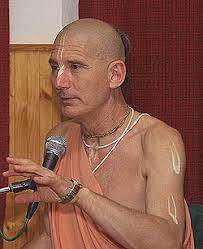
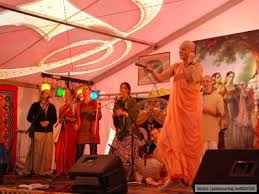


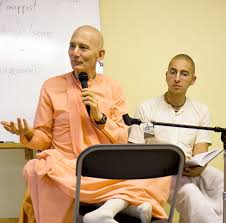


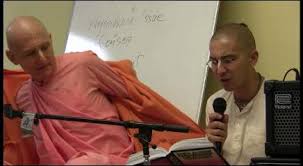













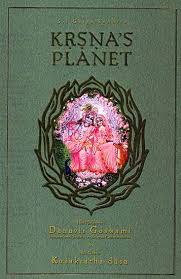


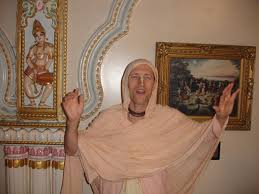




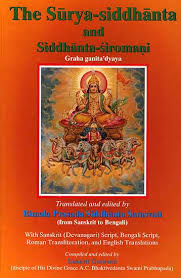










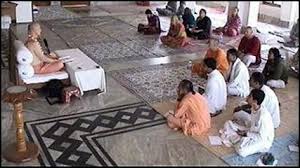





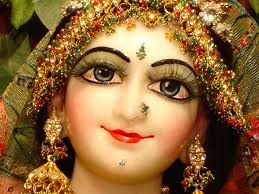
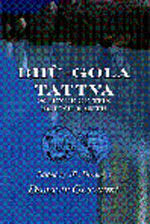












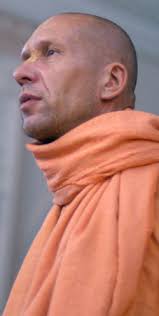



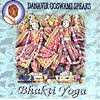
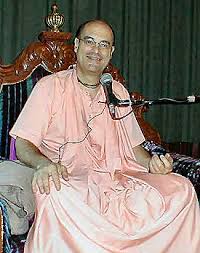

















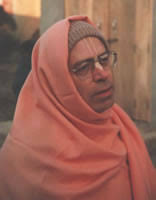




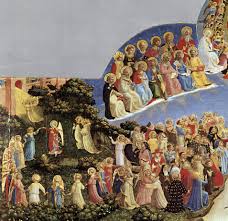





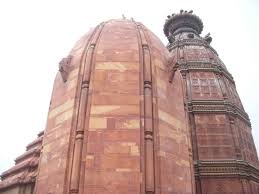



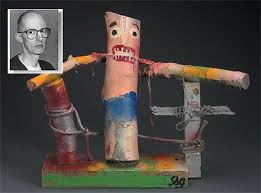
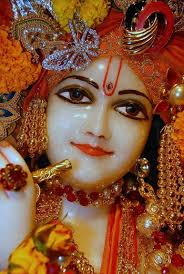





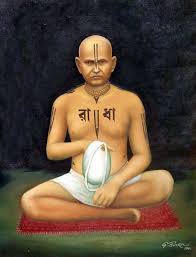
















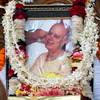











No hay comentarios:
Publicar un comentario